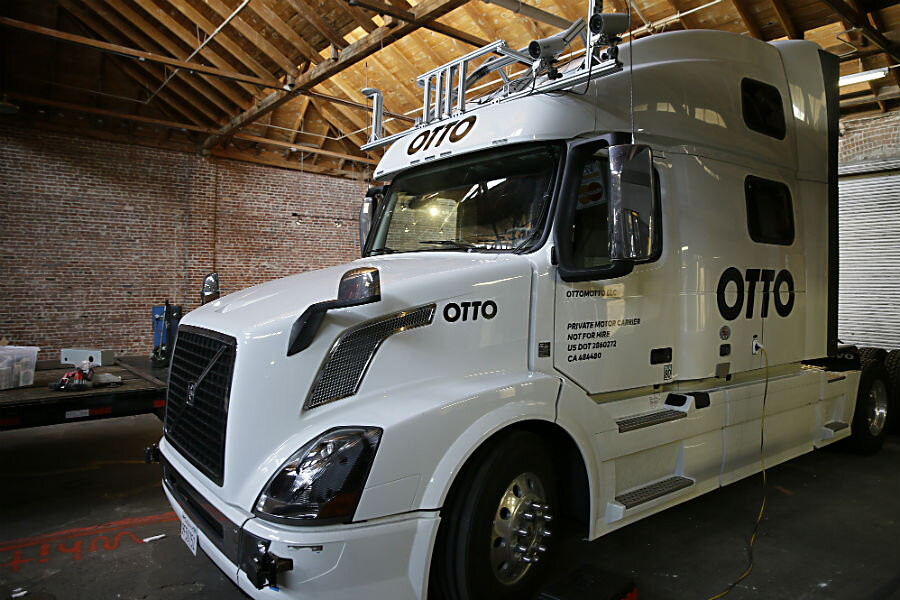With driverless big rigs, ex-employees one-up Google's self-driving cars
Loading...
A company created by former Google employees is working to introduce driverless trucks to highways around the country, taking self-driving technology even beyond the tech giant's push for the widespread use of self-driving passenger cars.
Former Google autonomous car technical lead Anthony Levandowski and fellow ex-Google leaders Don Burnette, Claire Delaunay, and Lior Ron co-founded Otto, a startup which aims to equip existing commercial trucks with self-driving technology.
"As a technologist, I believe there will be no technology more transformative over the next decade than self driving cars," Mr. Ron wrote in a Google+ blog post on Tuesday. "The future is almost here, but it is time to accelerate it."
"Our goal is to make trucks drive as humanly as possible, but with the reliability of machines," Mr. Levandowski said, according to the Associated Press.
Self-driving technology has already spread from cars to other modes of transportation abroad, including experiments with buses in the Netherlands and trains in India. And driverless 18-wheelers are not a new concept, either; Daimler Trucks' Inspiration self-driving semi and Mercedes-Benz's Actos truck equipped with its Highway Autopilot system were both demonstrated in 2015, although they have yet to be widely available or approved by regulators.
The Otto team, however, hopes to bring self-driving tech to trucks that have already hit the roads, instead of building new rigs from scratch.
The quartet of ex-Googlers founded Otto in order to reduce what they call the "unacceptable number of fatalities" – 9.5 percent of driving deaths – caused by truck drivers and alleviating the "gradual decline in quality of life" truckers have experienced as their industry changes. Human drivers could rest while the truck drives automatically for brief stretches, for example.
The country's more than 3 million truck drivers, however, may worry that the bigger threat to their "quality of life" is some day being entirely replaced by automated "drivers."
In the eyes of Otto, though, safety and efficiency demand that we "rethink the way we move goods on the road," as the team writes on a company blog post. "We are at Otto because we're driven by an urgency and deep obligation to accelerate the future."
The company's other goals include reducing congestion on highways, cutting back on the large percentage of automobile pollution caused by large trucks, and filling the expected shortage of truck drivers needed as the shipping and transportation industry grows.
Testing is underway, but before Otto can "bring this technology to every corner of the US highway system," automated big-rig technology must be regulated and adopted across all 50 states. Some currently allow fully autonomous cars on their roads, while others require drivers to be alert and awake behind the wheel even when a vehicle's self-driving systems are in control.
And humans will have to take control once an Otto-driven vehicle leaves a main highway, no matter where the road is. Although Otto's leaders believe trucks using their technology will eventually function without a human behind the wheel, some are worried that the tech's first step is not yet ready for the open road.
"I don't want to be on that highway when there is nobody there to take over a truck with 80,000 pounds of cargo and I don't think I know anyone else who would want to be," University of California Partners for Advanced Transportation Technology program manager Steven Shladover told the AP.
"The consequences of any kind of failure in any component would be too severe," he said.
Otto estimates its kit will cost truck owners around $30,000, according to Wired, and can be added to any truck built after 2013. For now, the company will continue testing and development in hopes of attracting investment.








